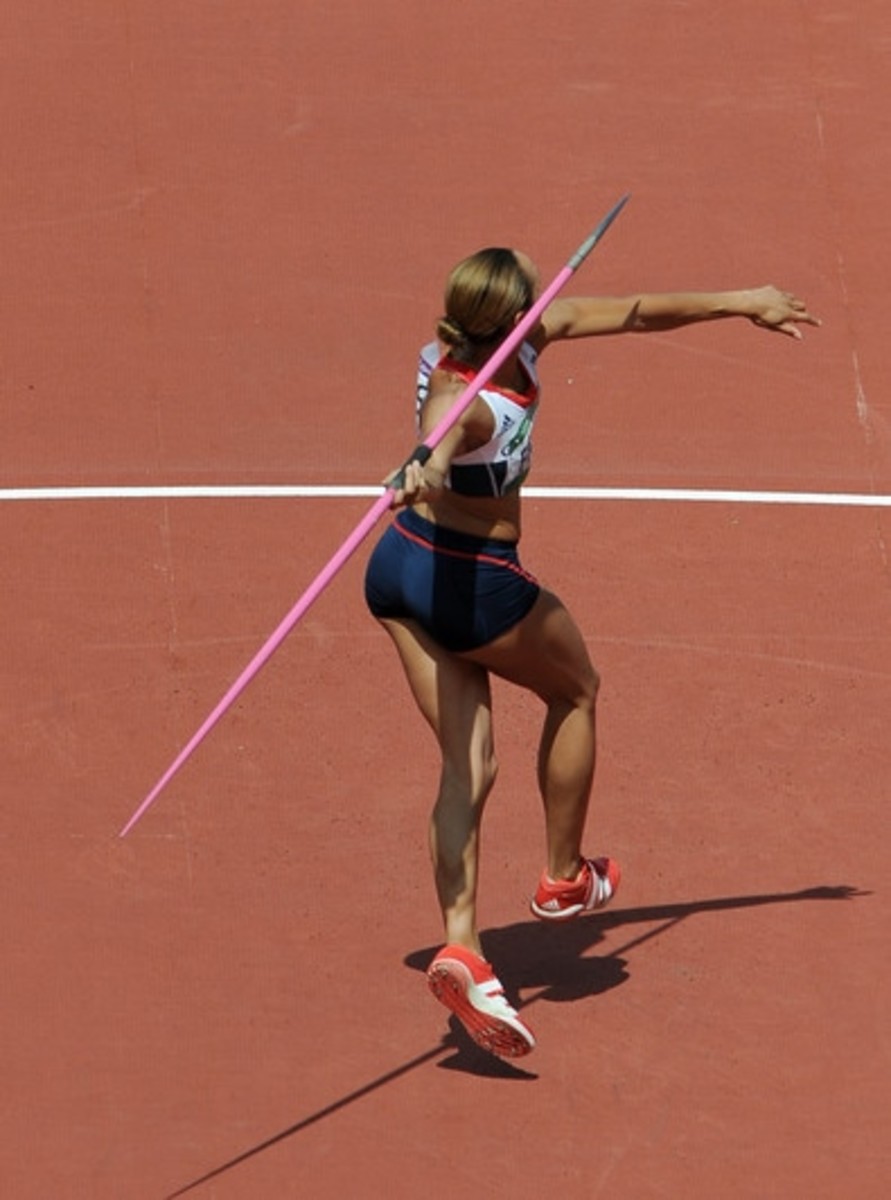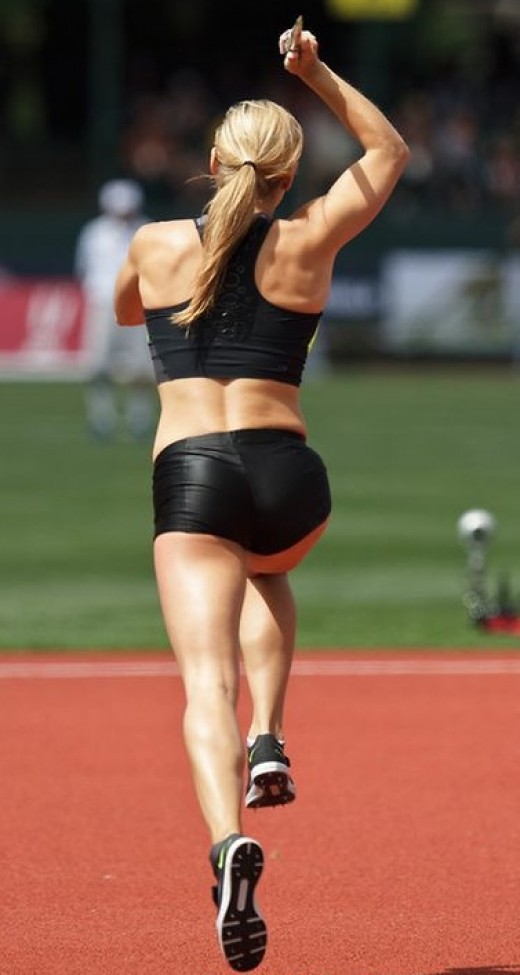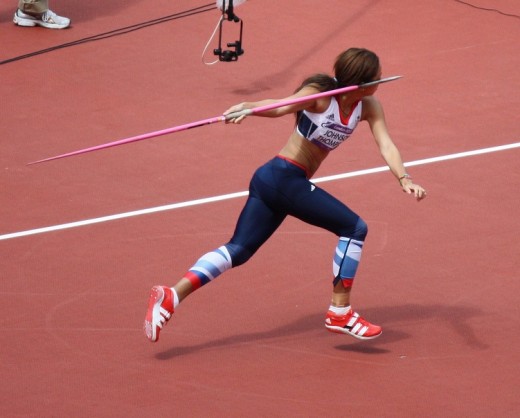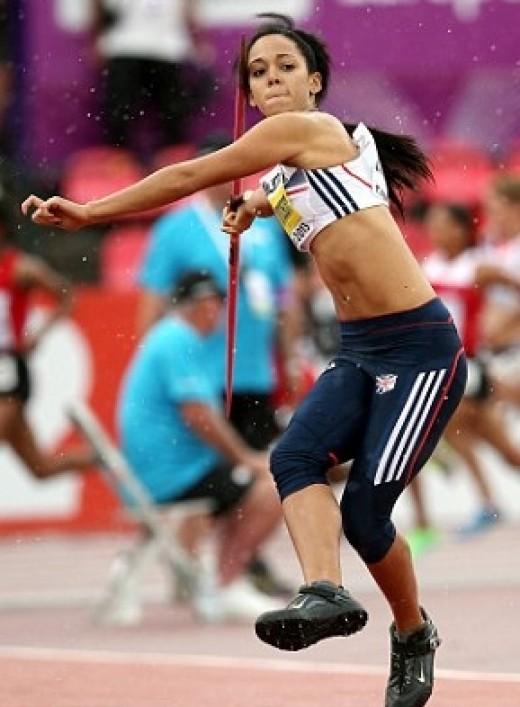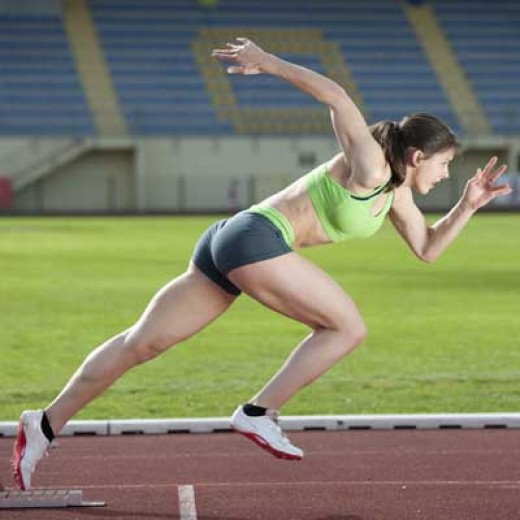Military fitness & sports conditioning programs and workouts incorporating all components of physical fitness. Designed to enhance the strength and conditioning of men and women, alike.
Showing posts with label butt. Show all posts
Showing posts with label butt. Show all posts
Sunday, November 27, 2016
Sunday, November 13, 2016
Saturday, November 5, 2016
Horizontal Jump Workout Plan
A phenomenal method to build your butt!
Labels:
athletes,
butt,
exercise,
female,
fitness plan,
glutes,
jumping,
legs,
training plan,
women's fitness,
workout
Tuesday, November 1, 2016
Long, Lean and Powerful
Coordination, flexibility, power and speed are all developed by the general conditioning program for horizontal jumpers. It’s time to get lean and powerful while building your best booty.
Labels:
athletes,
athletic,
backside,
booty,
butt,
coordination,
female,
flexibility,
jumping,
lean,
power,
speed,
training,
women's fitness,
workout
Monday, October 31, 2016
How to Build an Athletic Butt: General Conditioning Plan for Horizontal Jumpers
Athletes have some of the shapeliest and toned backsides on the planet. Build your own killer booty with a long and triple jumpers' strength and conditioning plan. Runway and sand pit are not needed!
Thursday, October 27, 2016
GLUTES ACTIVATION
The glutes are best activated by power and speed movements such as dashing and jumping.
https://caloriebee.com/workout-routines/HOW-TO-BUILD-AN-ATHLETIC-BUTT
Labels:
athletic,
booty,
butt,
exercise,
female,
glutes,
power,
speed,
sports,
sports conditioning,
training,
volleyball,
women's fitness,
workout
Tuesday, October 18, 2016
"QUICK" FIXES FOR FLAT BUTTS
I f you're looking for a plan to help develop a high & round butt...look no further than the conditioning programs of speed athletes.
Labels:
athletes,
athletic,
bodybuilding,
booty,
butt,
female,
fitness,
glutes,
javelin,
quickness,
speed,
sports conditioning,
track & field,
training plan,
training program,
women's fitness,
workout
Saturday, October 15, 2016
BUTT BUILDING TRAINING PROGRAM
This series focuses on building an athletic butt with glutes-developing activities. The javelin routine will not on work your booty, but with a significant amount of core exercises and weight lifting, this strength and conditioning routine is a total physique changer. Follow the routine and reap its benefits; become stronger and more agile while reducing excess body fat and building a gossip-worthy derriere.
Labels:
abs,
agility,
athletic,
bodybuilding,
booty,
butt,
core,
derriere,
exercise routine,
glutes,
physique,
reduce body fat,
sports conditioning,
strength,
stronger,
training plan,
weight lifting
Thursday, October 13, 2016
PHYSICAL SKILLS DEVELOPMENT: JAVELIN THROWERS
Javelin throwers come in all shapes and sizes. Along with the discus and shot put, the javelin is a throwing event. Javelin throwers tend to be significantly leaner than their throwing counterparts.
The critical components of fitness for javelin throwers include:
- Agility - the ability to quickly change directions;
- Coordination - the ability to combine simple movements into an efficient complex movement;
- Flexibility - the ability to move joints through a full range of motion;
- Muscular Strength - the ability to produce force;
- Power - the ability to quickly produce maximal force.
Javelin throwers ability to stay physically fit and perform explosive throws is based on their sport-specific skills and physical conditioning. Your athletic skills including agility, strength and power will be enhanced using the training activities conducted by these athletes. Besides added athleticism, their general conditioning program will go a long way to help flatten your abs and round your booty.
Labels:
abs,
agility,
athletes,
athletic,
bodybuilding,
booty,
butt,
coordination,
explosive,
female,
fit,
flexibility,
performance,
power,
sports conditioning,
strength,
training,
women's fitness,
workout
Tuesday, October 11, 2016
Javelin Training to Build an Athletic Butt
Javelin throwers come in all shapes and sizes. Along with the discus and shot put, the javelin is a throwing event. Javelin throwers tend to be significantly leaner than their throwing counterparts.
General javelin conditioning involves core conditioning, plyometrics, running, stretching and weight training. Due to the nature of the event, core and glutes development is essential.
So it's time to build your own athletic physique with a javelin thrower's training plan. No spear slinging is involved!
Hurdler-specific Warm-up Exercises
The specific warm-up works movements that are integral to hurdling, beginning the conditioning process and improving range of motion.
Do one set of ten repetitions per side of; Bird Dog, Donkey Kick, Fire Hydrant, Mountain Climber, and the Standing Quadriceps Stretch (10 seconds each).
Labels:
athletic,
balance,
bodybuilding,
butt,
calisthenics,
derriere,
exercise,
female,
fitness,
glutes,
health,
injury prevention,
motivation,
shape,
sports conditioning,
training program,
women's fitness,
workout
Monday, October 10, 2016
CORE STRENGTH & STABILITY
Training the body's midsection is much more than working to get a six-pack stomach. Core training is critical for good performance. The core section connects the body's upper and lower limbs and acts as the body's power regulator.
In throwing events such as the javelin, the efficient transfer of force determines the acceleration in which the javelin is thrown and subsequently the distance it is thrown.
Three separate core training cards will be used during this program to address core strength, core stability and core rotation.
Three separate core training cards will be used during this program to address core strength, core stability and core rotation.
Labels:
abs,
athletes,
athletic,
butt,
core,
core stability,
exercise,
female,
fitness,
glutes,
health,
performance,
shape,
sports,
sports conditioning,
training,
women's fitness,
workout
Thursday, October 6, 2016
How to Build an Athletic Butt Part 4
Athletes have some of the shapeliest and toned backsides on the planet. Build your own killer booty with the conditioning techniques used by track & field's javelin throwers. No spear throwing required!
Information concerning the general strength and conditioning drills and strategies used by javelin throwers is presented. This training involves core conditioning, plyometrics, running, stretching and weight training. Due to the nature of the event, core and glutes development is essential.
So it's time to build your own athletic physique with a javelin thrower's training plan. No spear slinging is involved!
Labels:
athletic,
backside,
bodybuilding,
booty,
butt,
conditioning,
core,
female,
flexibility,
glutes,
javelin,
plyometrics,
running,
shape,
strength,
tone,
track & field,
weight lifting
Wednesday, October 5, 2016
YOU WON'T GET THE BUTT YOU WANT BY SITTING ON IT!
Labels:
backside,
bikini,
body,
bodybuilding,
booty,
butt,
buttocks,
caboose,
exercise,
female,
fitness,
glutes,
legs,
motivation,
rump,
shape,
sports conditioning,
women's fitness,
workout
Tuesday, October 4, 2016
TRAINING FOR A KILLER BOOTY
Try this progressive training program to enhance your athleticism while shaping your caboose.
Labels:
athletic,
backside,
body,
bodybuilding,
booty,
butt,
buttocks,
caboose,
derriere,
exercise routine,
female,
fitness program,
glutes,
legs,
motivation,
rump,
sports conditioning,
training plan,
women's fitness,
workout
Saturday, October 1, 2016
SPEED WORK
A session to get explosive and fast with speed work. Wind sprints help muscle toning particularly in the glutes and legs as well as adding a key athletic skill to the exercise plan.
As an injury preventing measure, sprint at no more than eighty percent of your top speed. Additionally, ensure that you complete the general and specific warm-ups before sprinting and that you cool down and stretch afterwards.
Labels:
acceleration,
athletes,
athletic,
body transformation,
butt,
exercise,
female,
fitness,
legs,
power,
running,
speed,
sports,
sprinting,
training,
women's fitness,
workout
Wednesday, September 28, 2016
ATHLETIC PHYSIQUE: Comprehensive Four Month Training Plan
Each phase of the plan is one month long. The general fitness progression goes from;
- Phase I: Endurance and General Conditioning
- Phase II: General Conditioning and Strength
- Phase III: Speed and Strength
- Phase IV: Power and Speed
Using periodization, each phase forms a base which is further developed during the following phase. Once the entire cycle is completed, take a week off and restart the process.
Friday, September 23, 2016
BUILD A TIGHT BOOTY WITH ATHLETIC TRAINING
Athletes in general have some of the shapeliest and toned backsides on the planet. The glutes are best activated by power and speed movements; such as dashing and jumping. Explosive sporting events such as long and triple jumping, pole vaulting, sprinting, tennis and volleyball rely heavily on powerful glutes. Having super strong glutes is a prerequisite for success in speed and power events. Bodybuilders talk about “glute day or “squat day”, for these athletes, every day is glute day!
Beach volleyball is considered an anaerobic power sport were diving, jumping and sprinting are common activities. Beach volleyball players' power development training program includes two types of activities; plyometrics (jumping drills) and weight lifting. Speed, agility and quickness (SAQ) training gives players the ability to change directions quickly and reduces the chances of injury while conducting drills with the volley ball.
Sprinting and jumping are great ways to tone your derriere and build an athletic physique. Hurdlers do both in a single event. Hurdlers are phenomenal athletes; curvy and strong, fast and fit. Using their training techniques will go a long way in developing physical skills while shaping and toning your entire body.
Labels:
athletes,
athletic,
backside,
bodybuilding,
booty,
butt,
buttocks,
derriere,
female,
fitness plan,
glutes,
motivation,
power,
speed,
sports,
sports conditioning,
training program,
women's fitness,
workout
Tuesday, September 13, 2016
GENERAL CONDITIONING WORKOUT
A year-round general conditioning workout designed to gain and maintain an excellent overall state of conditioning. This workout includes exercises to develop cardiovascular endurance, core stability and maximum strength.
Cardiovascular endurance is trained and tested using a 1.5-mile run. Each 4 session cycle will include a best-effort time trial, two easy jogs and a fartlek workout. Fartlek is the Swedish word for "speed-play". During the fartlek session; the first and last half-miles are conducted as an easy jog with the middle half-mile run at a vigorous pace.
Core stability and local muscular endurance are developed and tested using abdominal crunches.
Lower body and upper body strength are developed and tested using the barbell squat and barbell bench press. The sessions are cyclic in nature; moving from reps of 5, to 3, then a 1 rep maximum lift. A one week of light lifting ends the cycle. Each work includes 3 sets of each lift. The first set is conducted at 50% of the training/max weight. The second set is conducted at 75% of the training/max weight. If you're doing sets of 5 with 100 pounds being the training weight; the first sets will be with 50 pounds, the second set at 75 pounds and the final set at 100 pounds. This protocol serves 2 purposes. First, it provides a specific warm-up using sub-maximal weight. Second, it conditions your body to lift heavier after you've already lifted. This will help reduce the risk of injury while training yourself to finish strong. The light week includes one set each at 5, 3 and 1 reps all at 50% of the normal training/max weight. As you get stronger, increase the weight in small increments and maintain the 50%-75%-100% lifting protocol.
Labels:
abs,
athletes,
athletic,
bench press,
butt,
cardio,
core stability,
crunches,
derriere,
endurance,
female,
fit,
running,
sports,
sports conditioning,
squat,
strength,
training program,
women's fitness,
workout
Friday, September 9, 2016
HURDLERS: Requisite Physical Fitness Components
Each athletic position or events within certain sports demand specific abilities and skills. For hurdlers to be successful, they must develop the following components of fitness:
- Agility – the ability to quickly change directions. For most sports, this means moving left or right. For hurdlers, it means up and down movement (hurdling);
- Coordination – the ability to combine simple movements into an efficient complex movement;
- Flexibility – the ability to move joints through a full range of motion;
- Muscular Endurance – the ability to execute movements repeatedly;
- Muscular Strength – the ability to produce force;
- Speed – the ability to move quickly from one point to another.
http://hubpages.com/health/HOW-TO-BUILD-AN-ATHLETIC-BUTT-SERIES-PART-3
Labels:
agility,
athletes,
athletic,
butt,
coordination,
endurance,
female,
fitness,
flexibility,
muscle,
speed,
sports,
sports conditioning,
strength,
track,
training,
women's fitness,
workout
Subscribe to:
Posts (Atom)






